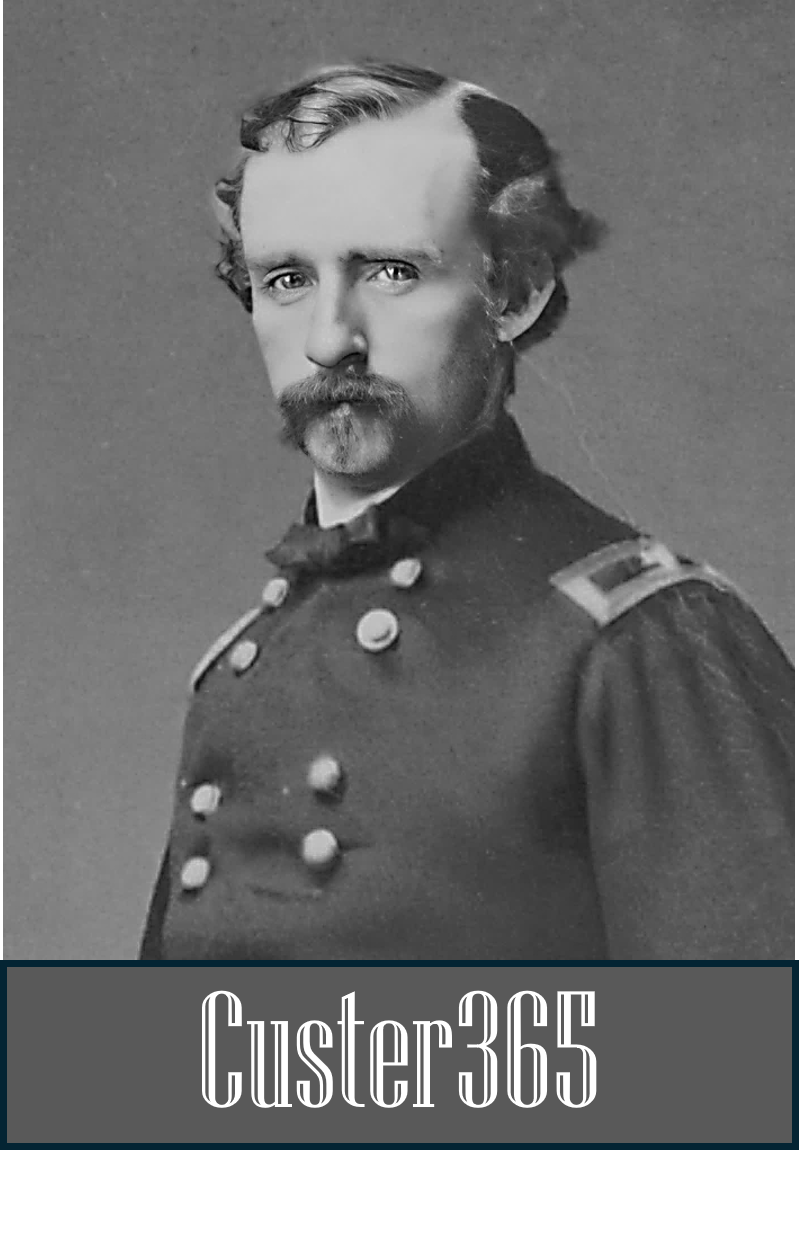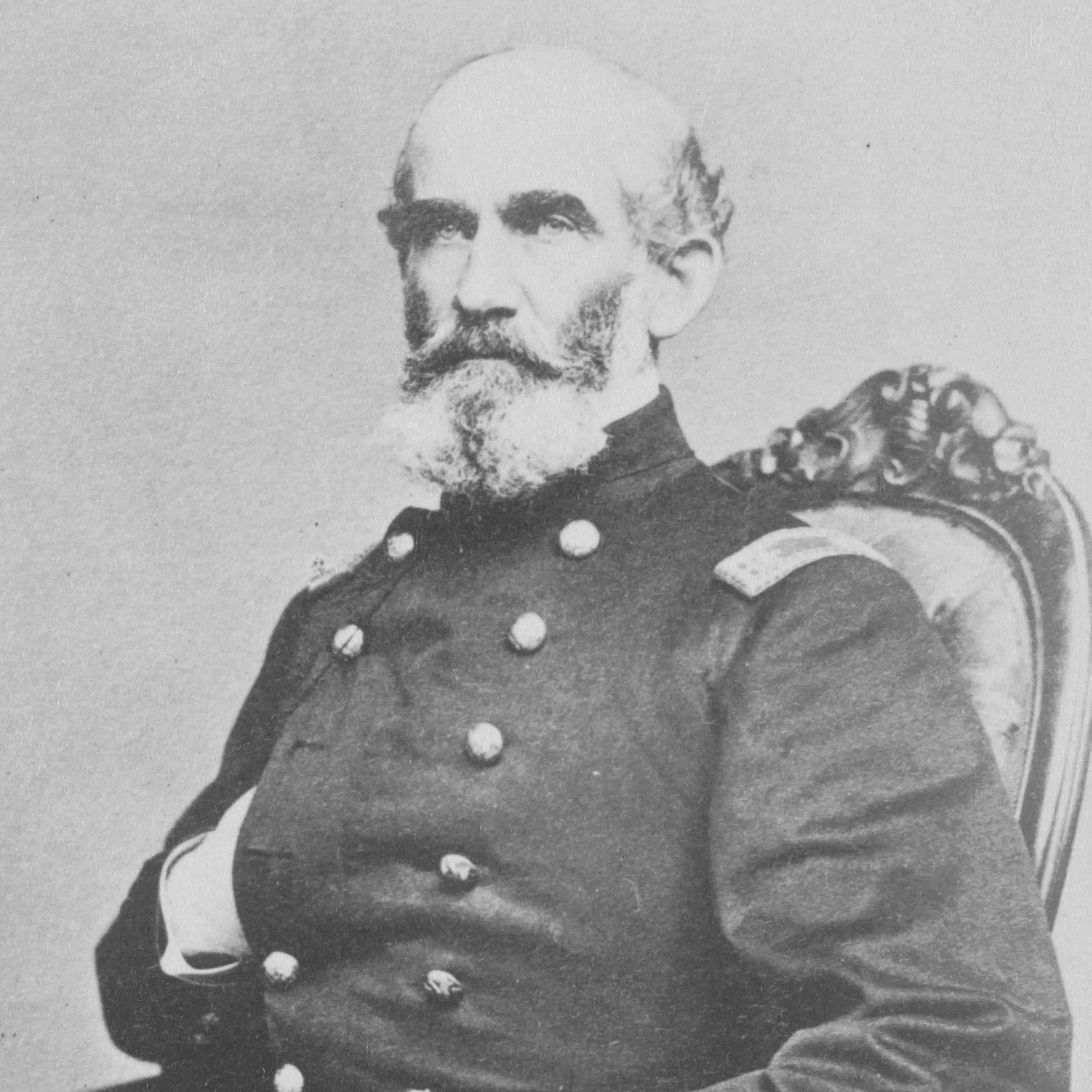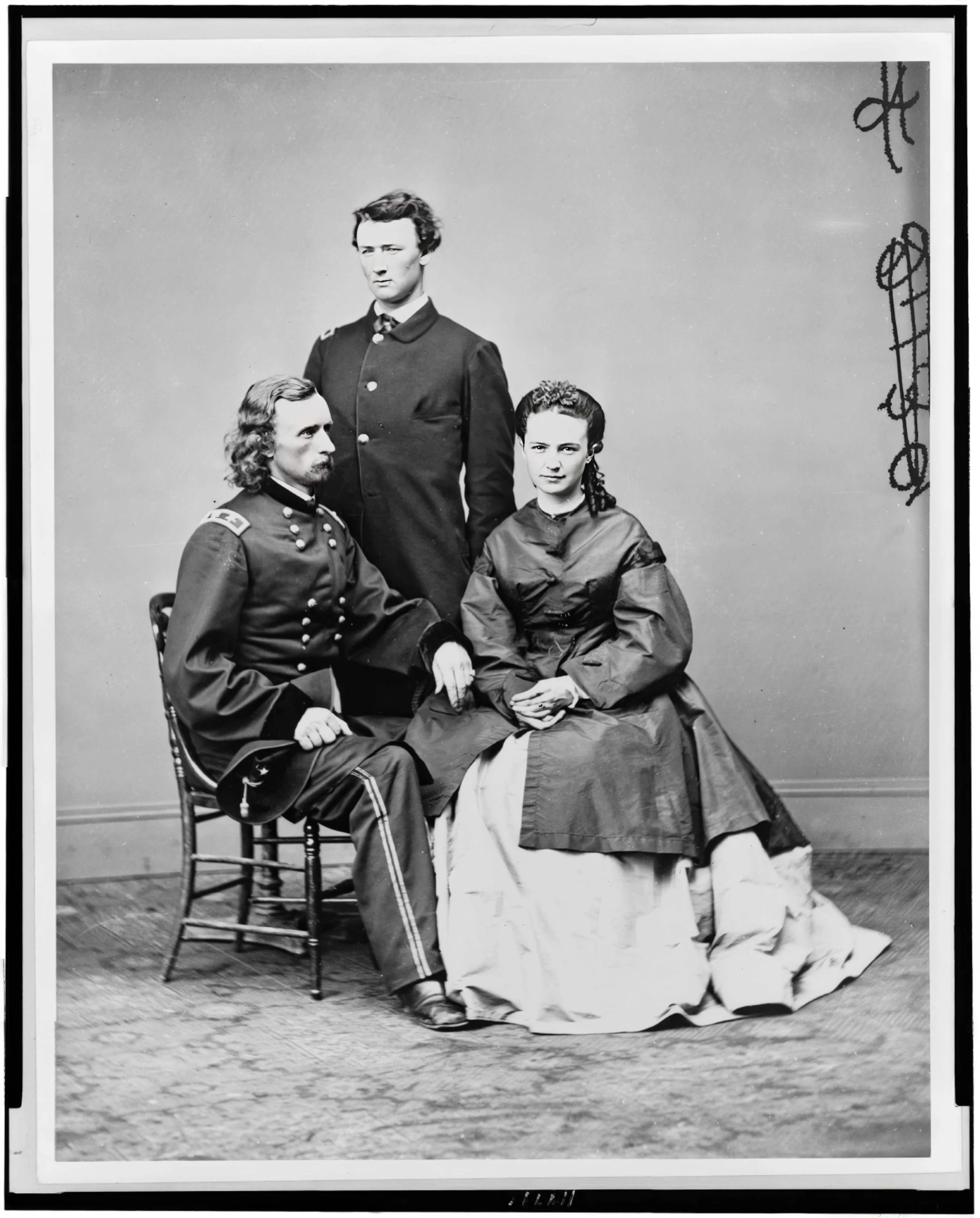OCT 11: Guilty as Charged
On Oct. 11, 1867, George Armstrong Custer was found guilty by an Army jury of being absent without leave and unlawful killing of deserters during a court-martial related to abandonment of his post in July of that year in Kansas. The reason Custer gave at the time was his desire to see his wife, Libbie, whom he feared was in danger during a rash of Indian attacks throughout the territory.
That summer, Custer experienced multiple desertions by troops under his command, many of whom complained of poor rations and no rest while they covered more than 700 miles in six weeks of campaigning.
Maj. General Winfield Scott Hancock. (Credit: Library of Congress)
The incident that led to his court-martial began on July 15, when Custer, three officers and 72 men, set out from Fort Wallace, Kansas east toward Fort Harker. Custer was ordered to Fort Wallace originally by his superior, Maj. Gen. Winfield Scott Hancock. Hancock gave additional orders, which Custer later stated caused him to travel east from Fort Wallace for confirmation.
n July 16, according to Valerie Mullaley, author of “Lore of the Corps: The Court-Martial of George Armstrong Custer”: “…another trooper attempted to desert. Custer sent Sergeant James Connelly and a detail after the man. After capturing the deserter, the small group was ambushed by Native Americans while attempting to rejoin the main body. One Soldier was killed and another wounded; both were left behind by the Soldiers as they fled their attackers. The sergeant reported the attack to Custer, who was determined to keep pushing onward despite his subordinates’ pleas to try and locate their fallen comrades. An infantry detail would later recover the dead Soldier’s body as well as his wounded companion.”
Col. A.J. Smith. (Credit: Library of Congress)
Custer pushed on to Fort Hays, where he then left most of his column there and proceeded on with his brother First Lt. Tom Custer and three other men to Fort Harker. Once there, Custer was confronted at 2:30 a.m. by the commanding officer of the fort, Col. Andrew J. Smith, who thought Custer was supposed to be at Fort Wallace.
Seeing that his wife was not at Fort Harker, Custer boarded a train for Fort Riley, another 90 miles to the east. After arriving, the Custers reunited. But it was a short-lived reunion as Custer was arrested on July 21 at Fort Harker and charged with leaving his command without authority.
Subsequent charges against Custer also included ordering the killing of deserters without trial and preventing wounded deserters from receiving medical aid, resulting in the death of one of the three wounded on July 16.
The court-martial convened on Sept. 15 at Fort Leavenworth, Kansas. Custer pled not guilty to all charges and specifications. An old friend from West Point, Captain Charles C. Parsons, 4th U.S. Artillery, served as Custer’s legal counsel. The prosecutor was Capt. Robert Chandler (Judge Advocate.)
During the trial, Mullaley wrote, “Custer argued that he had received verbal orders giving him wide latitude regarding his chosen routes and that his journey to Fort Hays and then to Fort Harker had been spurred by overriding guidance to confer with Major General Winfield Scott Hancock. Without reliable postal service or telegraph lines, Custer argued, he could only meet with Hancock in person, necessitating his journey east. Custer claimed that the orders he had intercepted en route to Fort Harker had to be interpreted as incomplete, necessitating his continued journey east. As to his further movement to Fort Riley to see Libbie, he argued that Colonel Andrew J. Smith had verbally authorized it.”
Custer also responded during his trial that he had issued an order to kill deserters in order to overawe the men in his command, many of whom he suspected of plotting to desert en masse, rather than as a literal command to pursuers. Custer introduced evidence showing that his superior, Maj. General Hancock, had issued orders demanding the killing or capture of deserters within his district. He also claimed that he had not prevented proper medical treatment of the wounded.
(L-r) George, Tom and Libbie Custer. (Credit: Library of Congress)
At the conclusion of the trial, the court found Custer guilty of the first charge (AWOL) and an additional charge for unlawful killing of deserters, ruling that he should be suspended for one year without pay.
According to Mullaley: “The Custers were dismissive of the trial’s results, with Libbie writing that it was ;nothing but a plan of persecution for Autie’ (Custer’s nickname). The latter charge seems unlikely given Custer’s influence with the senior leadership of the Army and friendship with Secretary of War Edwin Stanton. For his part, when approving the findings of the court-martial, then-General of the Army Ulysses S. Grant said: ‘The reviewing officer, in examining the testimony in the case, is convinced that the Court, in awarding so lenient a sentence for the offences of which the accused is found guilty, must have taken into consideration his previous services.’ Lt. Gen. William T. Sherman commented that ‘the levity of the sentence, considering the nature of the offenses of Brvt. Major General Custer if found guilty, is to be remarked on.’”




